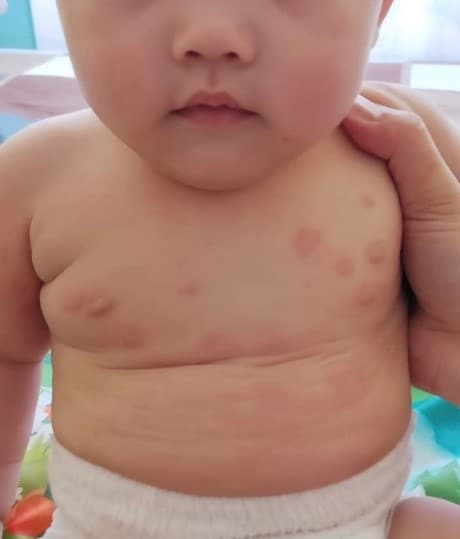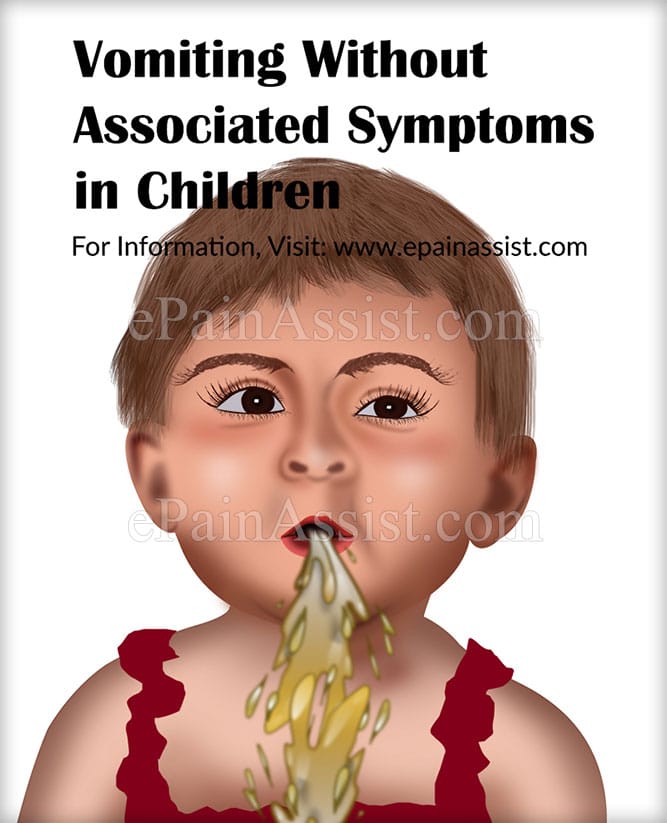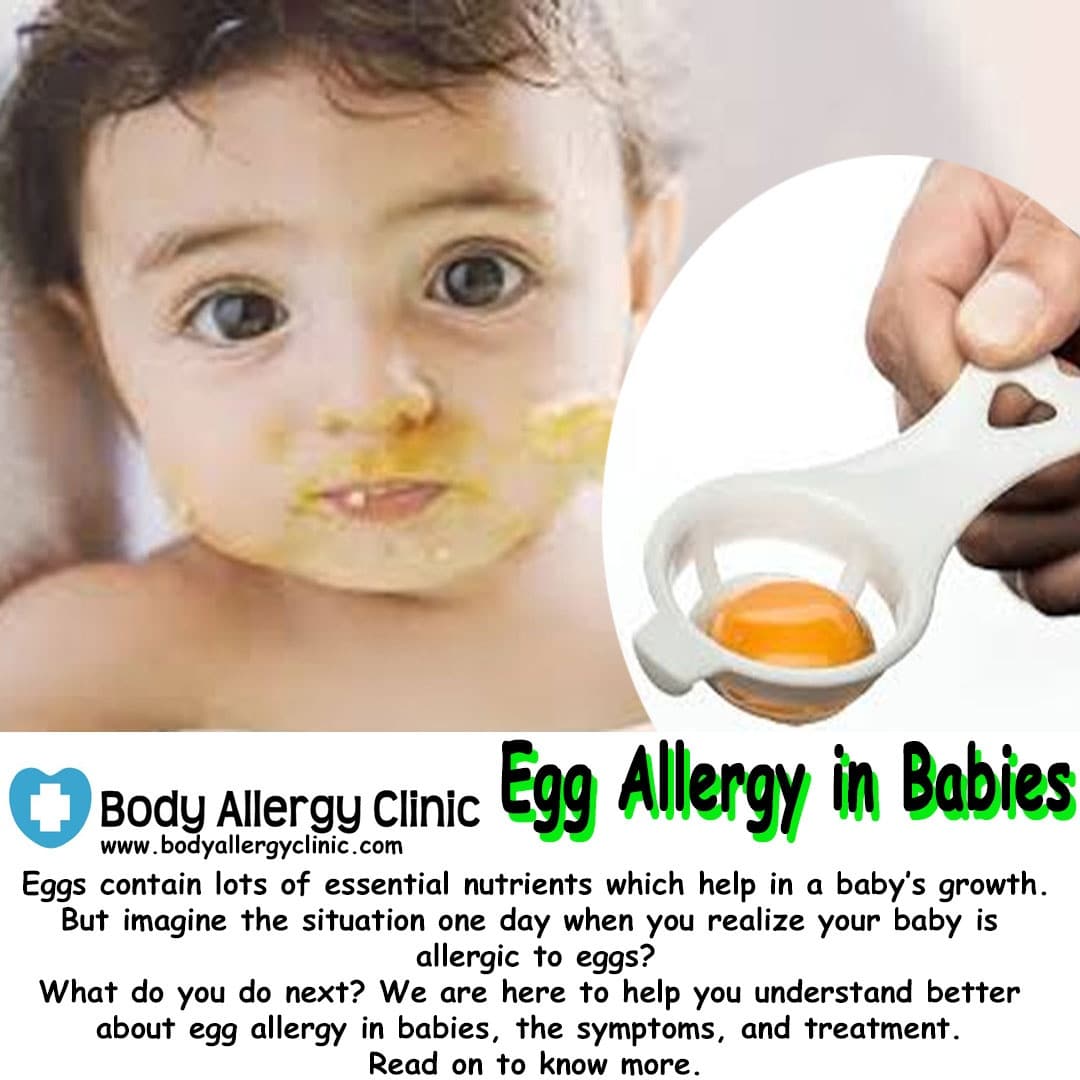What Causes Food Allergies
Before having a food allergy reaction, a sensitive child must have been exposed to the food at least once before, or could also be sensitized through breast milk. It is the second time your child eats the food that the allergic symptoms happen. At that time, when IgE antibodies react with the food, histamines are released, which can cause your child to experience hives, asthma, itching in the mouth, trouble breathing, stomach pains, vomiting, and/or diarrhea.
Introducing Foods That Could Trigger Allergy
When you start introducing solid foods to your baby from around 6 months old, introduce the foods that can trigger allergic reactions one at a time and in very small amounts so that you can spot any reaction.
If your baby already has an allergy, such as a diagnosed food allergy or eczema, or if you have a family history of food allergies, eczema, asthma or hay fever, you may need to be particularly careful when introducing foods. Talk to your GP or health visitor first.
Foods that can trigger an allergic reaction are:
- foods that contain gluten, including wheat, barley and rye
- nuts and peanuts
These foods can be introduced from around 6 months as part of your baby’s diet, just like any other foods.
Once introduced and if tolerated, these foods should become part of your baby’s usual diet to minimise the risk of allergy.
Evidence has shown that delaying the introduction of peanut and hen’s eggs beyond 6 to 12 months may increase the risk of developing an allergy to these foods.
Lots of children outgrow their allergies to milk or eggs, but a peanut allergy is generally lifelong.
If your child has a food allergy, read food labels carefully. Avoid foods if you’re not sure whether they contain the food your child is allergic to.
Treatment For Food Allergy
There is no medication to prevent food allergy. The goal of treatment is toavoid the foods that cause the symptoms. After seeing your child’s doctorand finding foods to which your child is allergic, it is very important toavoid these foods and other similar foods in that food group. If you arebreastfeeding your child, it is important to avoid foods in your diet towhich your child is allergic. Small amounts of the food allergen may betransmitted to your child through your breast milk and cause a reaction.
It is also important to give vitamins and minerals to your child if he orshe is unable to eat certain foods. Discuss this with your child’s doctor.
For children who have had a severe food reaction, your child’s health careprovider may prescribe an emergency kit that contains epinephrine, whichhelps stop the symptoms of severe reactions. Consult your child’s doctorfor further information.
Some children, under the direction of his or her health care provider, maybe given certain foods again after three to six months to see if he or shehas outgrown the allergy. Many allergies may be short-term in children andthe food may be tolerated after the age of 3 or 4.
Read Also: What Are The Signs Of Milk Allergy In Babies
Q : How Is Fpies Different To Many Common Food Allergies
It is possible for a child with FPIES to also have Immunoglobulin E mediated allergies to other foods, and/or have eczema and/or asthma.
However, FPIES is not caused by IgE, and:
- Is usually a delayed reaction.
- Reactions only involve the gastrointestinal system.
- No hives, welts or swellings are seen on the face or body.
- Is not associated with anaphylaxis, so adrenaline is not used to treat an FPIES reaction.
Can Allergies Cause Nausea

Allergies are common all around the world. They result from an overreaction of the immune system to certain external stimuli such as pollen and mold. Common symptoms of allergies include running nose, blocked nose, coughing and sneezing. But what about nausea? Is it one of the symptoms of allergies too?
Read Also: How Common Are Fish Allergies
Introducing Foods With Common Allergens
Once your baby is six months old, don’t avoid feeding them the common allergens . In fact, experts say you should include them in their diet before they turn one.
Introducing peanuts in an age appropriate form as part of their complementary feeding from six months onwards can prevent peanut allergies***. Just make sure you feed them in the right way based on your baby’s age and development.
Here are a few more handy tips below
Dining Out With Food Allergies
If your child has one or more food allergies, dining out can be achallenge. However, it is possible to have a healthy and satisfyingdining-out experience it just takes some preparation and persistence onyour part.
The American Dietetics Association offers these tips for dealing with foodallergies when your family is eating away from home:
-
Know what ingredients are in the foods at the restaurant where you plan to eat. When possible, obtain a menu from the restaurant ahead of time and review the menu items.
-
Let your server know from the beginning about your child’s food allergy. He or she should know how each dish is prepared and what ingredients are used. Ask about preparation and ingredients before you order. If your server does not know this information or seems unsure of it, ask to speak to the manager or the chef.
-
Avoid buffet-style or family-style service, as there may be cross-contamination of foods from using the same utensils for different dishes.
-
Avoid fried foods, as the same oil may be used to fry several different foods.
Alternately, there are several types of allergy cards available on theinternet that can be customized with your child’s personal information. Oneexample is the Food Allergy Buddy Dining Card, promoted by the NationalRestaurant Association.
Read Also: Is Lactose Intolerance A Milk Allergy
What Are The Most Common Food Allergies And Food Intolerances
The food allergies most common among young children are those to cow’s milk, soy, egg whites, wheat, and citrus. Any food has the potential to trigger an allergy, though.
Lactose intolerance and gluten intolerance are 2 of the most common types of food intolerances. Children can also have intolerance to food additives, such as monosodium glutamate, nitrates, nitrites, sulphites, and dyes.
Protecting Baby Against Food Allergies: Easy Does It
In a reversal of earlier policy, the American Academy of Pediatrics is now recommending that potential allergens be introduced to your infant earlier rather than later. In doing so, the move may actually help prevent them from developing allergies to those foods.
Breastfeeding you baby for 4-6 months is the best way to prevent a milk allergy. Remember that breast milk or formula is higher in nutrition. When you begin to introduce whole milk, you should do so under a doctorâs supervision. Yogurt and soft cheeses are fine, because the proteins in these dairy products are broken down and less likely to cause tummy trouble.
The AAP now advises that, in the case of infants who are at high risk of allergies, peanuts should be introduced between 4-6 months. Infants at highest risk of developing peanut allergies are those with eczema or egg allergies or both. It was originally believed that introducing your baby to the foods when they are older might make any reactions more manageable.
Other potential allergens such as tree nuts and fish should be introduced over a period of time as you introduce your baby to solid foods, between 6 and 9 months
You should wait until at least age 1 to introduce honey, which can cause a potentially serious disease called infant botulism. Ask your pediatrician for guidance.
Don’t Miss: Which Plant Causes Pollen Allergy
What Are Food Allergies
An allergy is the immune system’s response to something it doesn’t like. For example, some people are allergic to dust or pollen and get itchy eyes or a runny nose when exposed to these allergens. With food allergies, most people react with digestive problems, hives, or breathing problems.
The human body treats allergens as invaders and produces antibodies to try to fight off the invasion. Once these antibodies enter the bloodstream, the body reactsâhence the term “allergic reaction,” which you can read about more here.
Thankfully, food allergies are rare in children, with fewer than 8 percent of those under the age of 3 having them. Many of these children also outgrow their food allergies over time.
Still, because the bodyâs reaction can be severe if your baby does indeed have a food allergy, itâs important to know what an allergic reaction can look like and what to do if you suspect your baby has a food allergy.
Other Possible Causes Of Vomiting
If youve determined that baby is vomiting and not just spitting up, keep in mind that these other illnesses and conditions may also be causes of vomiting in babies.
Gastroenteritis
The most common cause of vomiting in babies and young children is gastroenteritis, commonly known as a stomach bug. This is a bacterial or viral infection that is usually brought on by the rotavirus, and that causes vomiting and diarrhea.Your little one should feel better within a day or two.
Gastroesophageal reflux disease
GERD is gastroesophageal reflux disease, which is caused by stomach contents flowing back into the esophagus. It is a chronic, lasting problem. As we mentioned above, reflux is common in babies and toddlers under the age of two, and especially babies in their first few months of life. But GERD is a chronic digestive disorder that can damage the esophagus and cause vomiting, as well as cause ongoing feeding and growth problems. Half of all GERD cases are caused by either food allergies or food intolerances.
GERD causes forceful, projectile vomiting where your little one is visibly distressed, in contrast to the happy spitting up that is normal for babies. If baby has trouble feeding, with symptoms like projectile vomiting or blood in spit up, stomach pain, dehydration, gagging, respiratory symptoms like coughing and wheezing, they may have GERD. If you think your baby has GERD, contact a doctor.
Food intolerances
Recommended Reading: Why Are There More Peanut Allergies Now
Care Advice For Vomiting Without Diarrhea
When Should I Call The Doctor

It is hard to diagnose food allergies. If your child has a reaction to a food, you will need to see your doctor. Your doctor will refer you to an allergist for the right testing.
If a serious allergy is confirmed, your doctor may prescribe a medication , a needle that will protect your child right away if they are exposed to the allergen.
Also Check: What Helps Allergies Go Away
What If A Toddler Has Swallowed Something Poisonous
If your toddler begins to vomit after ingesting a poisonous substance, you will need to call a doctor immediately to ask for the best course of action. If you can identify the substance that he has ingested, do make a note of it and tell the doctor exactly what it is. The doctor will then be able to tell you what you need to do depending on what was ingested.
Food Allergy Or Food Intolerance
It can be very confusing working out whether it’s a true allergy or just a food intolerance. True food allergy reactions typically happen pretty quickly after the particular foodstuff has been eaten and the reaction is a response of your babys immune system. Within hours or even minutes of eating, symptoms such as hives, pale skin, vomiting, diarrhoea and breathing problems can start. Reactions can happen even when a tiny amount of food is eaten. For some, even touching or inhaling the food can cause a reaction. The most common foods causing allergies in the UK are peanuts, tree nuts, cows milk, egg, wheat, soy, fish and shellfish.
Food intolerances tend to be reactions to foods inside the digestive system, and dont involve the immune system. Lactose intolerance is a common example of a food intolerance. Usually, small amounts of the problem food can be eaten before symptoms appear. They can be embarrassing as people often suffer from gas, stomach aches, bloating and diarrhoea.
The only sure way to know if your baby is experiencing a food allergy is to talk with your GP and discuss your concerns.
Read Also: What Allergy Medicine Does Not Contain Antihistamine
What Are The Symptoms Of Food Allergy
Allergic symptoms may begin within minutes to an hour after ingesting thefood. The following are the most common symptoms of food allergy. However,each child may experience symptoms differently. Symptoms may include:
-
Lowered blood pressure
According to the National Institute of Allergy and Infectious Disease, itdoes not take much of the food to cause a severe reaction in highlyallergic people. In fact, as little as 1/44,000 of a peanut kernel cancause an allergic reaction for severely allergic individuals.
The symptoms of food allergy may resemble other problems or medicalconditions. Always consult your child’s doctor for a diagnosis.
How Do You Treat An Fpies Reaction
Always follow your doctor’s emergency plan pertaining to your specific situation. Rapid dehydration and shock are medical emergencies. If your child is experiencing symptoms of FPIES or shock, immediately contact your local emergency services . If you are uncertain if your child is in need of emergency services, contact 911 or your doctor for guidance. The most critical treatment during an FPIES reaction is intravenous fluids, because of the risk and prevalence of dehydration. Children experiencing more severe symptoms may also need steroids and in-hospital monitoring. Mild reactions may be able to be treated at home with oral electrolyte re-hydration .
Also Check: Can You Get Pneumonia From Allergies
Causes Of Food Allergies In Children
Researchers are still investigating what causes food allergies. However, it is known that children must first be exposed to foods that can cause an allergic reaction.
During the initial exposure to a certain food, the body creates antibodies. Being exposed to the food a second time triggers the immune response, as the antibodies recognize the food in the body.
There may also be a genetic component to food allergies. Having parents or other family members with food allergies can increase the likelihood that a child will have a food allergy.
Assessment And Diagnosis Of Food Allergies In Children
If you think your child has a food allergy, your GP is the best place to start. Your GP might refer you to an allergy or immunology specialist for further checks and tests.
Immediate-onset food allergies Tests for immediate-onset food allergies include the following:
- Skin-prick test: your childs skin is pricked with a special device that looks a bit like a toothpick and contains a drop of a specific allergen. If a hive comes up where your childs skin has been pricked, your child might have an allergy.
- Blood tests: the IgE antibody test checks whether your child has a high level of IgE antibodies to a specific allergen. A high level means your child is likely to have an allergy. Your child might have this test if they cant have skin-prick testing.
- Oral food challenge: sometimes your child will be given the possible allergen in a safe, supervised setting. Medical and nursing staff will watch to see whether an allergic reaction happens. This test carries a risk of anaphylaxis so only allergy and immunology specialists should conduct it in a place where anaphylaxis can be safely and quickly treated.
Only your GP, allergy and immunology specialist or paediatrician can order and assess allergy tests.
Delayed-onset food allergies If your child has a delayed-onset food allergy, diagnosis usually happens through an elimination and re-challenge test.
Your allergy and immunology specialist or dietitian will guide this test.
Read Also: What Essential Oils Help With Allergies
Introducing Common Food Allergies Into Your Babys Diet
Introducing common food allergens around six months is recommended. Foods that children are most commonly allergic to are milk, wheat, egg*, soy, peanut**, tree nuts, fish and shellfish. Exposing your little one to these foods early on can help reduce the chances of them becoming allergic. Reactions to foods can be common in babies, so knowing what to do and how to spot the signs is important.
Here’s some more info to help.
Dealing With Mild Food Allergies In Baby

If you see mild symptoms, such as hives or a rash, contact your pediatrician for further evaluation. The doctor might refer you to an allergist , who will ask more questions and do a physical exam. The allergies may order diagnostic tests such as:
- A skin test. This test involves placing liquid extracts of food allergens on your child’s forearm or back, pricking the skin, and waiting to see if reddish raised spots form within 15 minutes. A positive test to a food only shows that your child might be sensitive to that food.
- Blood tests to check the blood for IgE antibodies to specific foods
Remember, just because a babyâs initial allergic reaction to a new food may be mild, it may get worse upon following exposures. Talk to your pediatrician about any food allergy symptoms in your baby.
Some allergies go away with time. Egg and milk allergies often go away as children get older, but peanut, tree nut, and shellfish allergies tend to persist. That said, research shows that in the case of peanut allergies, peanut immunotherapy drops administered under the tongue are safe and effective as treatment for peanut allergy, even in children as young as 1. They were also found to help significantly desensitize the patients to peanuts.
Also Check: What’s The Best Antihistamine For Allergies

